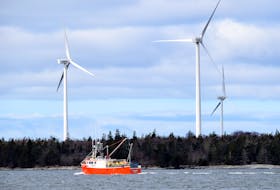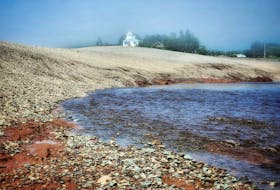OTTAWA – Increased linkages between four area historic sites could be part of the future for Parks Canada on the Isthmus of Chignecto.
The recently released Chignecto Isthmus National Historic Sites of Canada Management Plan 2018 has come up with recommendations to build on the visitor experience and its impact on both sides of the Nova Scotia-New Brunswick border.
Parks Canada, in partnership with local stakeholders studied the four sites, Beaubassin and Fort Lawrence in Nova Scotia and Fort Beausejour and Fort Gaspareaux in New Brunswick.
“One of the recommendations that I am very excited by is the increased linking of the four sites to create a ‘must-see’ experience that will encourage more visitation of the entire area,” Cumberland-Colchester MP Bill Casey said Monday.
Historically, all four sites are linked, so Casey explained it is only right that they are all promoted together to tell the history of the Acadians, the English and the Mi’kmaq in the area.
With many local groups interested in the history of the sites, one of the other recommendations will see Parks Canada work more closely with local stakeholders to focuses on building those relationships. This also includes new approaches so Indigenous peoples can tell their own stories and they, along with local stakeholders, can help contribute to the sites’ protection and presentation of programs.
“The Mi’kmaq were close allies of the Acadians and have a shared history on this site,” said Casey of the recently established National Historic Sites of Canada interpretive panels and walk trail at Beaubassin in Fort Lawrence, N.S. “It’s only right that they get to also tell their story,” Casey added.
Because of the Chignecto Isthmus location of the four sites, which is experiencing rising sea levels and coastal errosion, the third recommendtion made by Parks Canada in its management plan aims to mitigate threats such as these.
As part of it’s effort to continue the protection of the cultural and natural resources of the sites, Casey said it was his understanding that the commemorative integrity of the sites will be enhanced.
“This management plan for the area is definitely a win for us as far as tourism and protection of our heritage is concerned,” said Casey. “To really understand the history of the area, you really need to learn about and see all four of these sites.” None of them would exist without what had transpired in the other locations.”
As for the tourism aspect, Casey pointed out that it takes more than a few hours to visit these four sites and learn about how the battle for ownership of North America had played out in this area. By packaging them all together as a must-see experience, visitors will be encouraged to spend a day or two in the area and this in turn will generate more hotel nights and foot traffic in local restaurants and businesses, he explained.
“This tourism draw has the potential to increase the number of summer visitors to the area, who will stay here for a longer length of time. This will have a positive impact on our local economy in terms of jobs created to service the tourism industry, and with those wages that positive impact will extend into other sectors as these employees, in turn, support other local businesses,” said Casey.
The longtime MP, who will soon celebrate the 30th anniversary of his first federal election win in 1988, has been advocating for years for the development of Beaubassin and a stronger connection with the three other historic sites.
Beaubassin was rediscovered approximately 15 years ago with infrared photography showing numerous foundations. An archeaological dig between 2007 and 2011 located more than 7,000 artifacts indicating the area was a trade centre between Acadian and First Nations people.
The failed Chignecto Marine Ship Railway project of the late 1890s had its Bay of Fundy terminus in the area.
Fort Gaspareaux, near Baie Verte, N.B. at the north end of the isthmus, was built in 1751 as a way station between Fort Beausejour – which was also built in 1751 – and Louisbourg and Quebec. Communication with Fort Beausejour was at first via a portage route, but a road was constructed in1754. The fort fell in 1755 following the siege and capture of Beausejour and was renamed Fort Monckton.
Fort Lawrence was built near the former Acadian village of Beaubassin and was completed in August 1752 and later abandoned after Fort Beausejour was captured in 1755. Fort Beausejour was later renamed Fort Cumberland.
Last year, a view park was opened at the location of Beaubassin that was burned to the ground by the French in 1750 with its inhabitants moving across the Missiguash River to Beausejour.
The military operations between 1749 and 1755 along the isthmus were known as Father Le Loutre’s War that took place between King George’s War and the French and Indian War (or Seven Years War) in Acadia and Nova Scotia.
Twitter: @ADNdarrell

![['The Beaubassin view-park pictured from a month ago. The pavilion is surrounded by plexiglass covered in bird decals but has some openings above, below and in part of the side. ']](https://saltwire.imgix.net/dead-birds-2_webcc.jpg?cs=srgb&fit=crop&h=568&w=847&dpr=1&auto=compress%2Cenhance%2Cformat)







